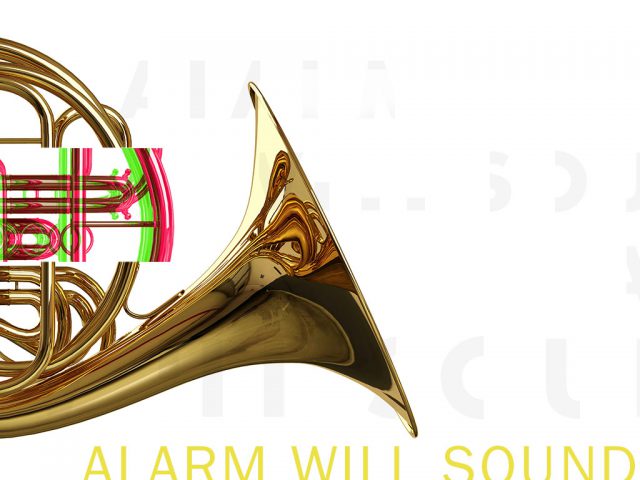
Nigel Maister, Alarm Will Sound’s theatrical director, laid out some details for the performers. Below are Nigel’s words to which we’ve added audio excerpts.
As when we first performed this piece, the staging of the Varese and its structure, have been conceived as a narrative of a battle, one in which the directionality of the sound (where it’s coming from and where it’s aimed at) plays a part. The audience is, at times, surrounded by competing volleys of sound—in the thick of the battle, as it were. I’m going to lay out the general narrative in its broadest form, as it may help you find your way into the theatrical dialogue of the piece.
The structure of the battle is, simply, the following: we start with opposing camps—the clarinets, flutes, oboe and trumpets behind the audience on one side, versus the trombones, percussion and horn, on “stage” on the other.
The forces of the clarinets (et al) are ultimately weaker and overpowered by the onstage forces. The E♭ clarinet begins the piece with a “call to arms” from the balcony on top of the Tiffany Alcove, a call that “wakens” the trombones (who you can think of as surly and sometimes aggressive sentries on the opposing side).
In turn, that brings the forces on the onstage side of the battle out onto the field egged on by the bass and snare/tenor drums. Ultimately, the bullying and badgering of the onstage forces “defeats” the weaker side, and trumpets, clarinets and flutes (the most bashful and shrilly timid of the bunch) all are “brought over” to the onstage forces. This concludes with the capitulation of the flutes (at the “Lent,” measure 5 before Reh 16).
The climax at measure 6 before Reh 16 is the end of “Act 1” of the piece. At this stage, to all intents and purposes, we think the battle is over. Everyone takes a breather and relaxes (except from some of the percussion who are dutifully still at their posts/on the lookout). The entire ensemble is gathered on the onstage area of the space. Except for the oboe, that is, who we’ve forgotten and who has been hiding/left behind enemy lines (still behind the audience), so to speak. She’s like a refugee—shell-shocked and terrified—who emerges from the bombed out rubble long after everyone else has fled. Once she announces herself plaintively, the remainder of the piece revolves around everyone trying to get the oboe—by cajoling, bullying, sweet talk, encouragement (it differs by instrument; the clarinets tend to be the most comforting; the trombones the most bullying)—to come over to the winning side. The oboe is lyrical, bashful and timid.
She eventually does get lured onto the playing space, but once moving into the heart of the victorious forces, instead of being saved, she is ultimately destroyed (which is how the piece ends). Not all refugees survive the war.
I don’t know if you’ll hear all that and it’s not important that an audience follow this narrative with absolute clarity…but it will give focus to what you do.
Some brief “character” notes:
Piccolos/Flutes: timid, skittish, shrill; very dependent on each other. Physically you are a close, worrywart team.
Oboe: like a vulnerable, wounded animal.
Clarinets: you’re like sentinels/sentries; you’re sensible; direct and emphatic (without being bullying)
Horn: you’re almost the leader if the onstage forces; you have authority; you keep tabs on everyone; you corral people and organize them; you motivate; you’re the general
Trumpets: you’re strident and warlike
Trombones: you’re sentries and lookouts; you quarrel and “talk” amongst yourselves. The Bass trombone tends to be the leader; the Ten trombone tends to be the aggressive hot headed one; the Cb trombone is the surly, but menacing one…the “bouncer”.
Percussion: precise, militaristic; urgent and insistent


